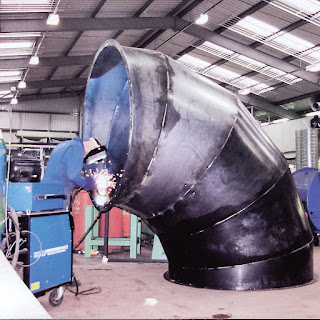Maximizing Efficiency: The Advantages of Energy Recovery Ventilation Systems in Modern Buildings
ERV systems excel in the efficient transfer of heat between incoming and outgoing air streams. By capturing and transferring the thermal energy present in the outgoing stale air to the incoming fresh air, these systems minimize the need for excessive heating or cooling, leading to significant reductions in energy consumption and utility costs. The efficient heat transfer capability of ERV systems contributes to sustainable energy practices and promotes environmental conservation by reducing the overall carbon footprint of buildings.
Humidity Regulation and Moisture Control:
One of the key benefits of ERV systems is their ability to regulate indoor humidity levels and control moisture within the building. By exchanging moisture between incoming and outgoing air streams, these systems effectively balance humidity levels, preventing the accumulation of excessive moisture that can lead to mold, mildew, and other moisture-related issues. The regulation of humidity not only promotes a healthier indoor environment but also contributes to the preservation of building materials and the structural integrity of the infrastructure.
Improved Indoor Air Quality:
ERV systems significantly contribute to the improvement of indoor air quality by continuously exchanging stale indoor air with fresh outdoor air. By eliminating pollutants, allergens, and other contaminants, these systems ensure a constant supply of clean and fresh air, creating a healthier and more comfortable living or working environment. The continuous circulation of fresh air minimizes the buildup of airborne toxins and odors, reducing the risk of respiratory issues and enhancing the overall well-being of occupants.
Noise Reduction and Comfort Enhancement:
In addition to their ventilation and energy transfer capabilities, ERV systems also contribute to noise reduction within indoor spaces. These systems operate quietly and efficiently, ensuring a seamless flow of fresh air without generating disruptive noise levels. By creating a peaceful and serene indoor environment, ERV systems enhance the overall comfort and well-being of occupants, promoting a conducive atmosphere for relaxation, concentration, and productivity.
Adaptability and Customization:
ERV systems are available in a variety of adaptable designs and configurations, making them suitable for various building types and sizes. Whether it's a residential home, office building, or commercial facility, ERV systems can be customized to accommodate specific ventilation requirements and indoor air quality needs, ensuring optimal efficiency and comfort for every type of building environment.
In conclusion, energy recovery ventilation systems have become integral components in promoting sustainable and energy-efficient building practices, offering a multitude of benefits that contribute to improved indoor air quality, reduced energy consumption, and enhanced occupant comfort. With their efficient heat transfer capabilities, humidity regulation features, air quality improvement, noise reduction functions, and customizable designs, ERV systems continue to redefine the standards of modern building ventilation, promoting a healthier, more comfortable, and environmentally sustainable indoor environment.






Comments
Post a Comment